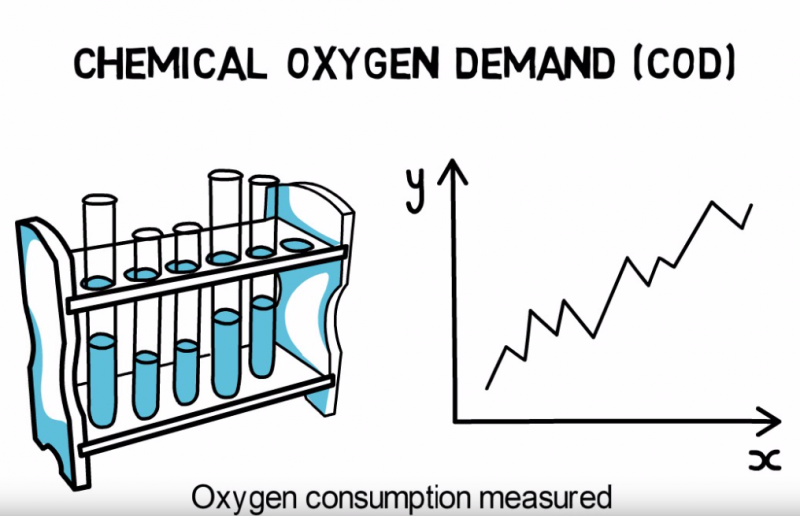Chemical Oxygen Demand - Indicator for Water Pollution
Published on by Water Network Research, Official research team of The Water Network in Technology
Chemical Oxygen Demand, also known as COD , accounts for the amount of oxygen consumed in a solution by chemical reactions in order to consume organic contaminants present, typically measured in milligrams per liter (mg/L). As oxygen is a fundamental element for the degradation of any product, the amount of oxygen that is present and consumed in water bodies is very important.

COD allows estimating the effect of discharging polluted wastewater in the environment. When effluents with high COD level are discharged in the environment, there will be a reduction of the dissolved oxygen (LO) available for the biome and biota in that environment. Consequently, the ecosystem will suffer losses in that area until LO is back to normal levels.
COD can be tested by the chemically oxidizing organic matter under conditions of heat and strong acids. Here, the presence of a very strong oxidant is necessary to ensure the proper measurement. Lately, the most common acid applied for the test is potassium dichromate, which is a hexavalent chromium salt and very strong oxidant, oxidizing between 95-100% of all organic matter.
The technique involves a two-hour digestion process in which samples are mixed with potassium dichromate, sulfuric acid and metal salts, the last two added to suppress interference and catalyze the reaction. After the digestion process is finished, the oxidation is measured considering the electrons consumed for the reduction of Cr6+ to Cr3+ and analyzed by spectrophotometry. Since the potassium dichromate shifts from yellow to dull green as it oxidizes, the samples can be read in wavelength of 600 and 420 nm.
Another similar and complementary measurement is the biological oxygen demand (BOD). As the name suggests, BOD refers to the oxygen consumed in a solution by biological organisms, typically aerobic microorganisms and accounts for the compounds that are not chemically degraded. Combined, these two represent basic measures that allow estimating the final quality of the effluent to be discharged in the environment. By determining COD and BOD the impact of the organic compound discharged into the environment can be estimated serving as a parameter for assessment of the water treatment efficiency.
Read the whole article on AET's blog.
Media
Taxonomy
- COD Removal
- Industrial Wastewater Treatment
- Water Treatment & Control
- Industrial Water Treatment
- Waste Water Treatments
- Wastewater Treatment
- Industrial Water Treatment
- Biological Oxygen Demand (BOD)
- water treatment